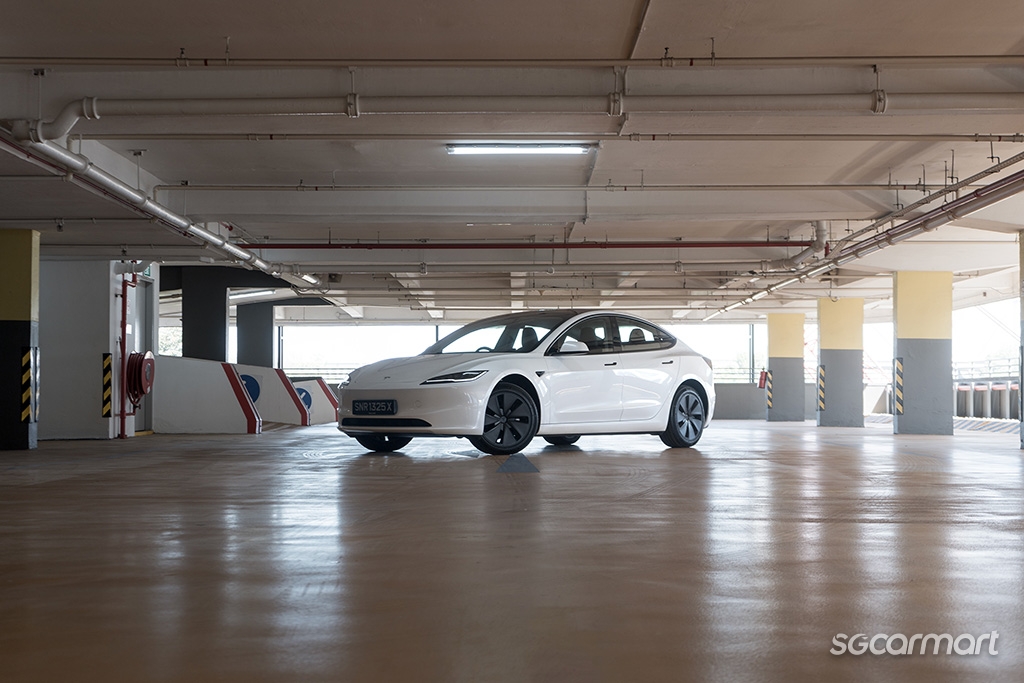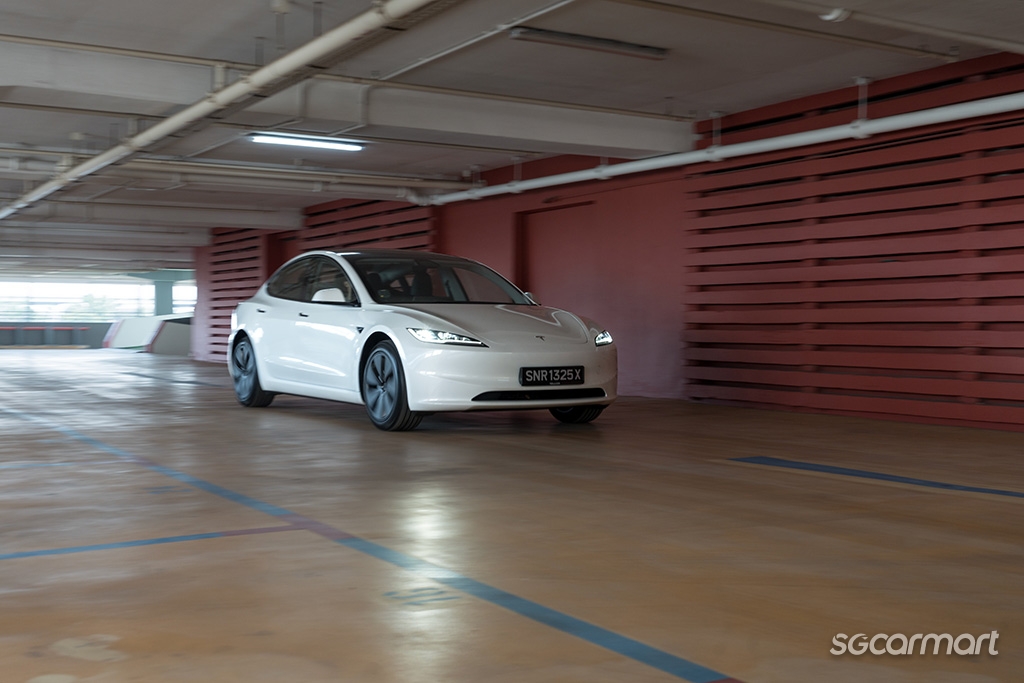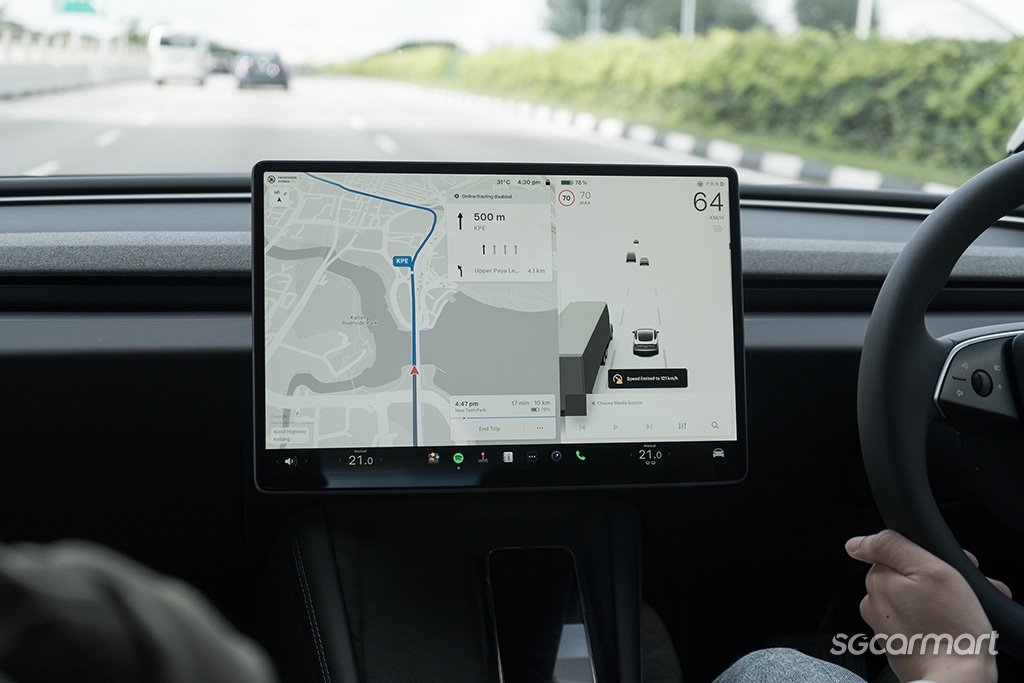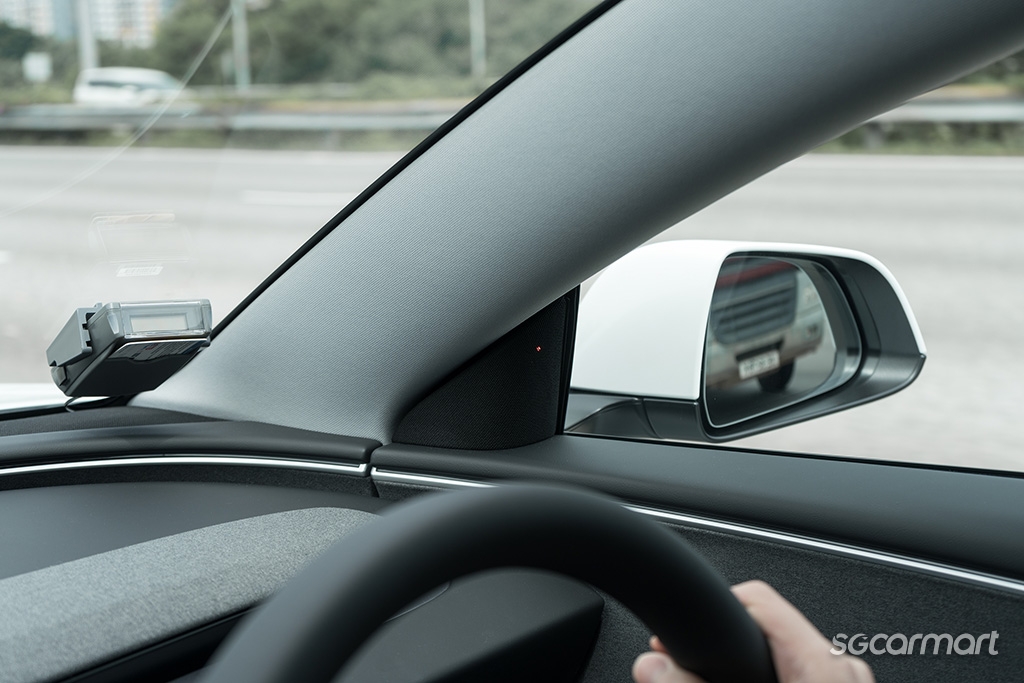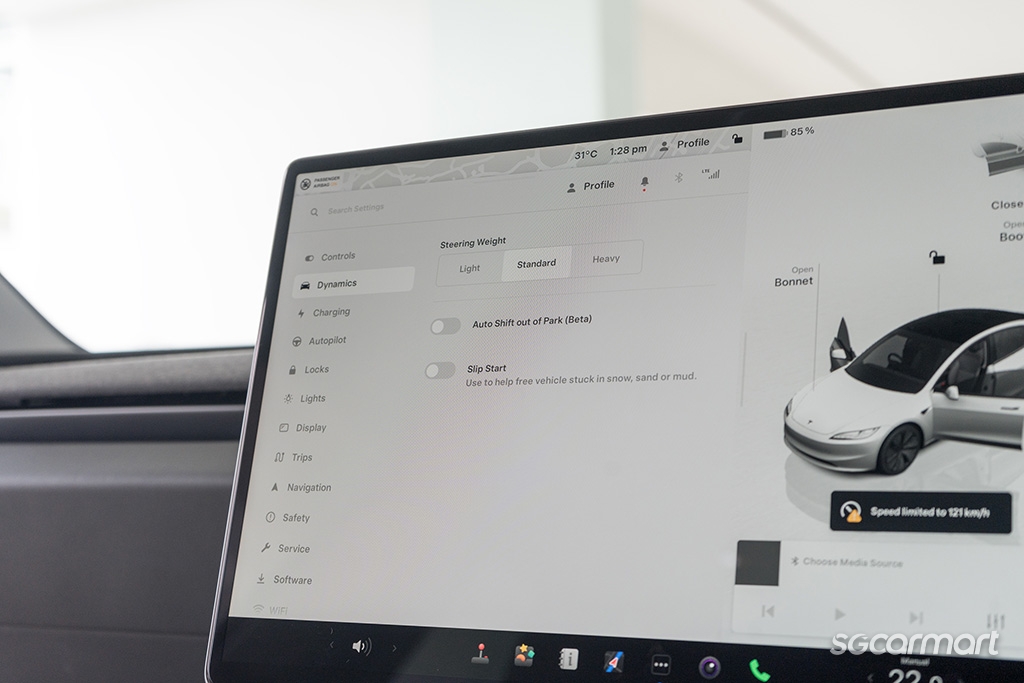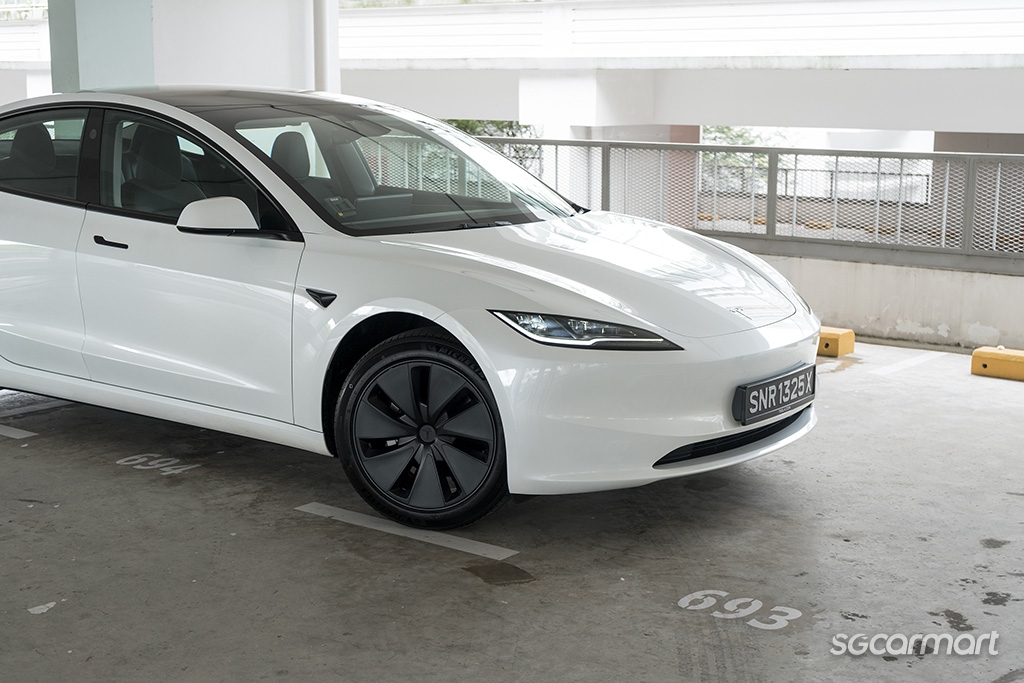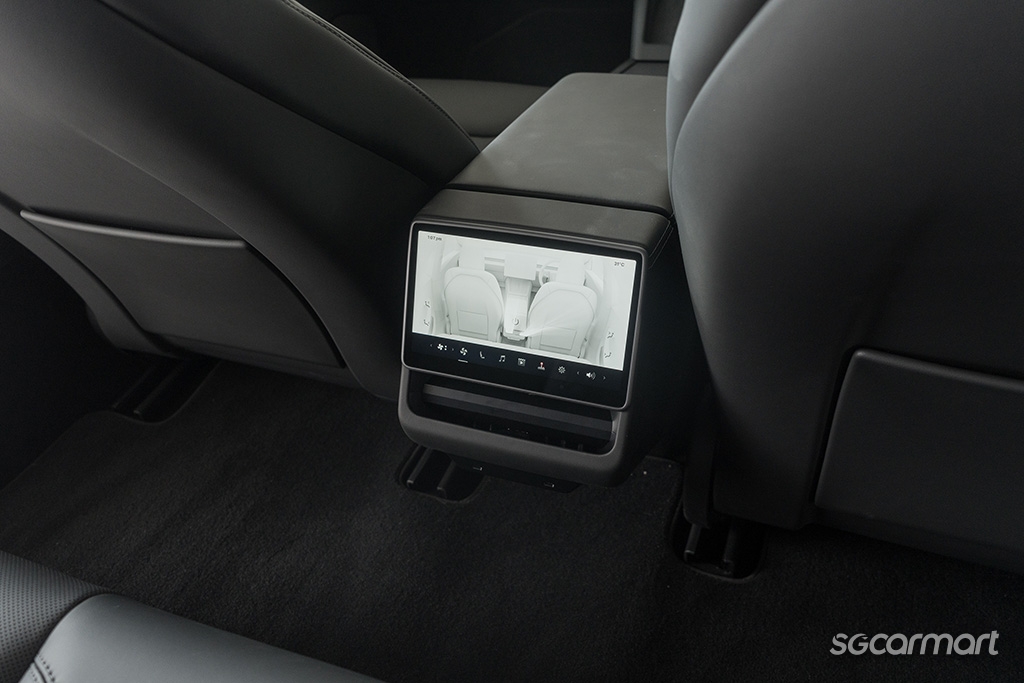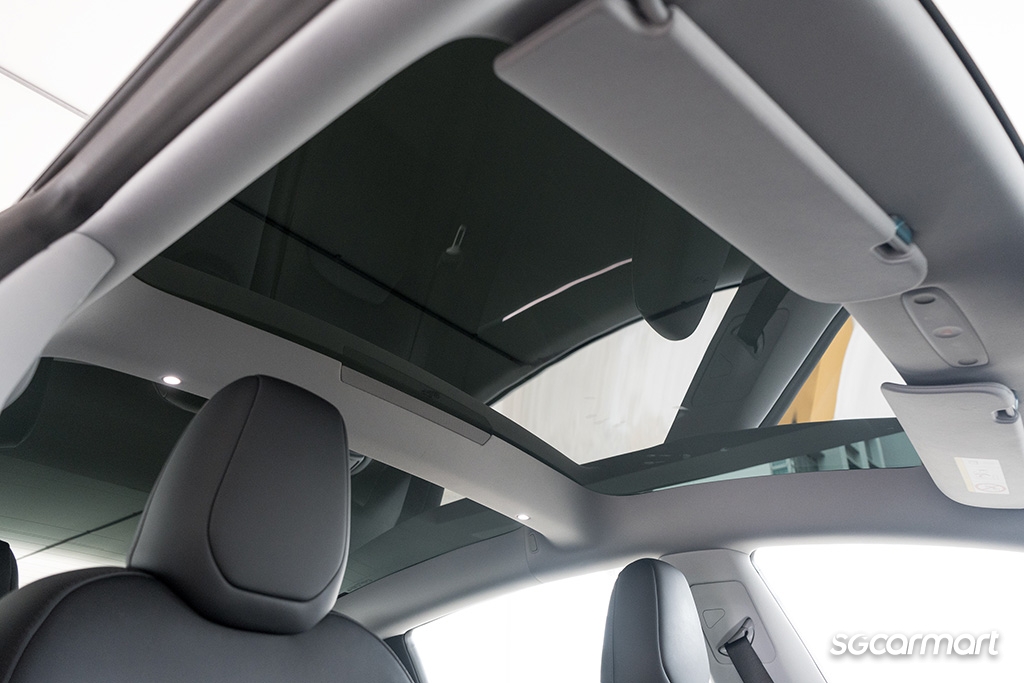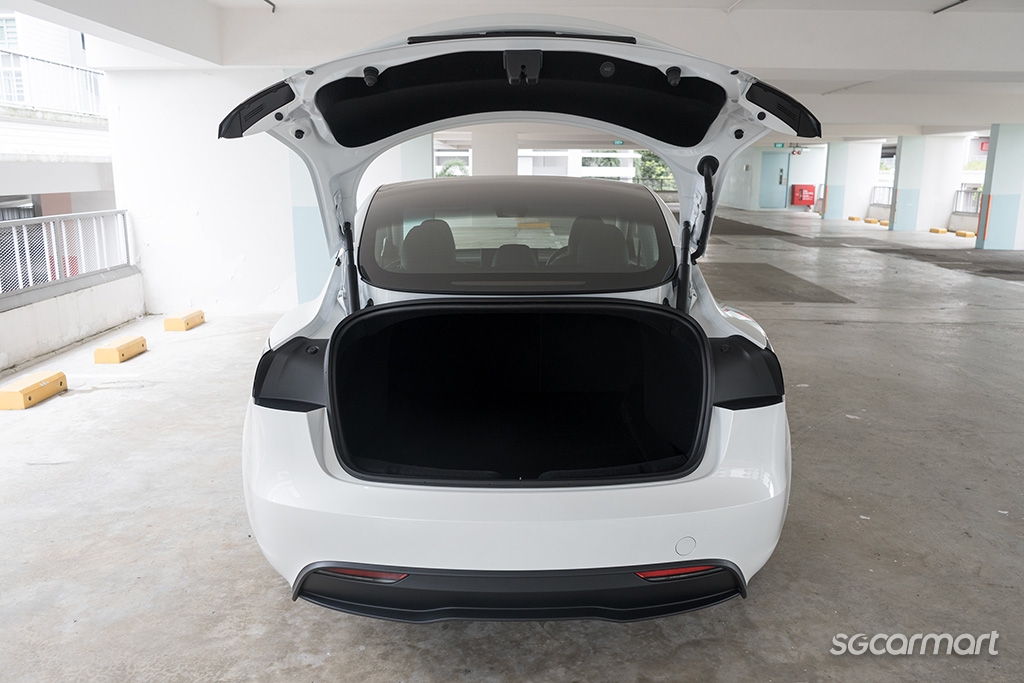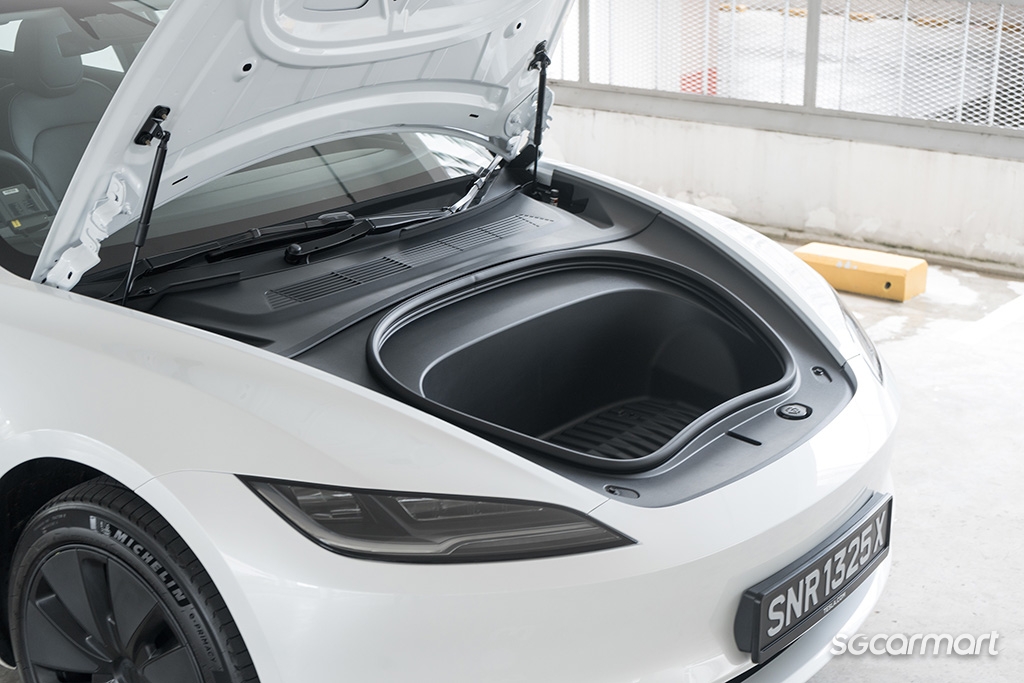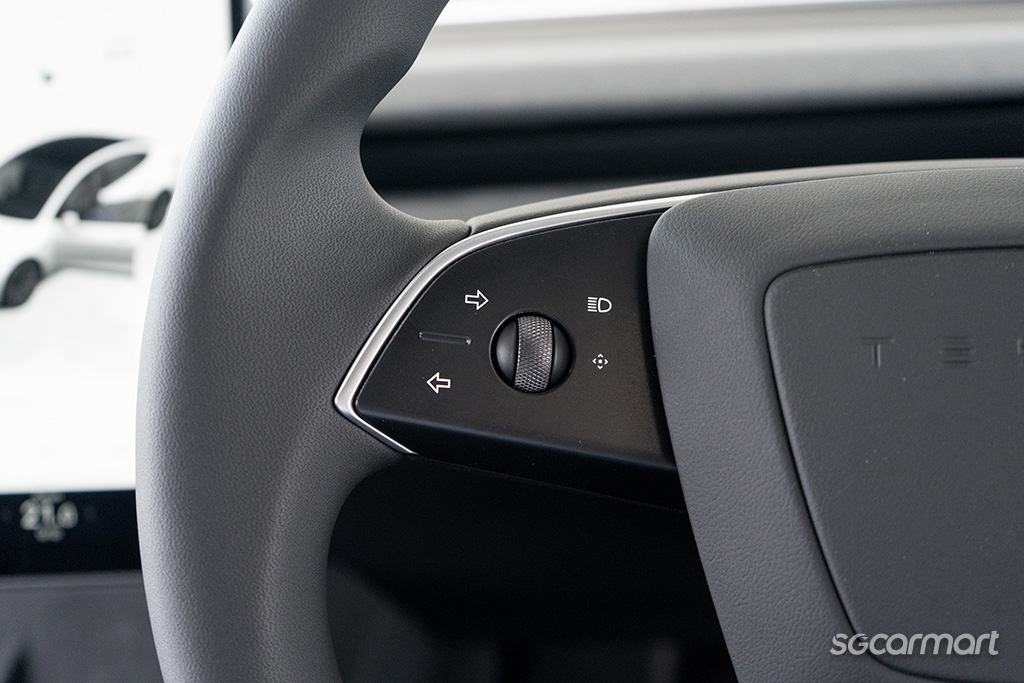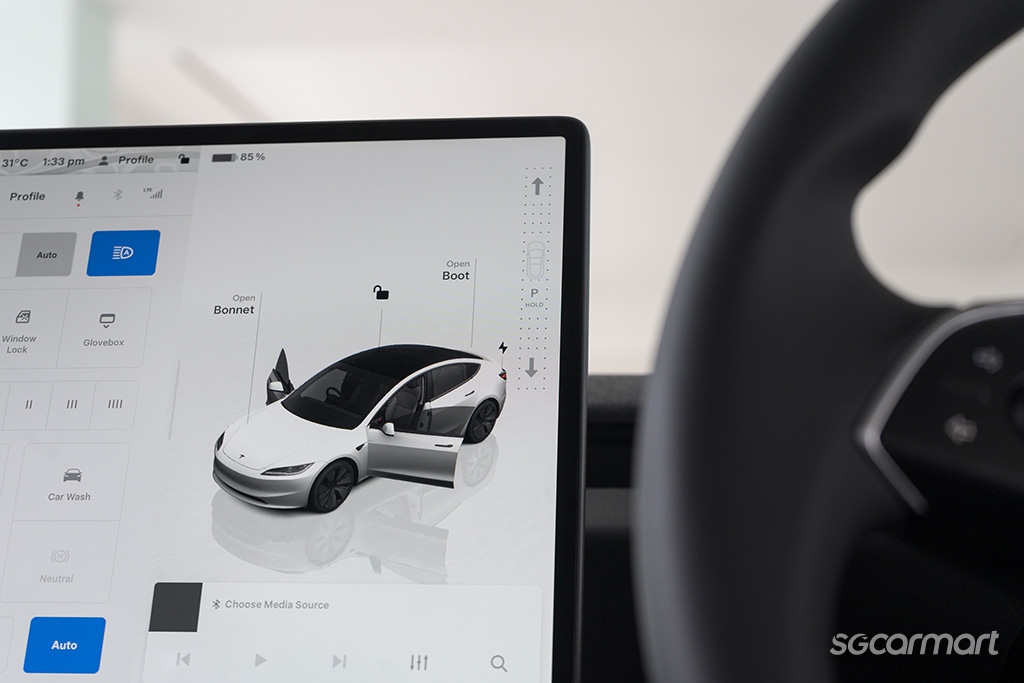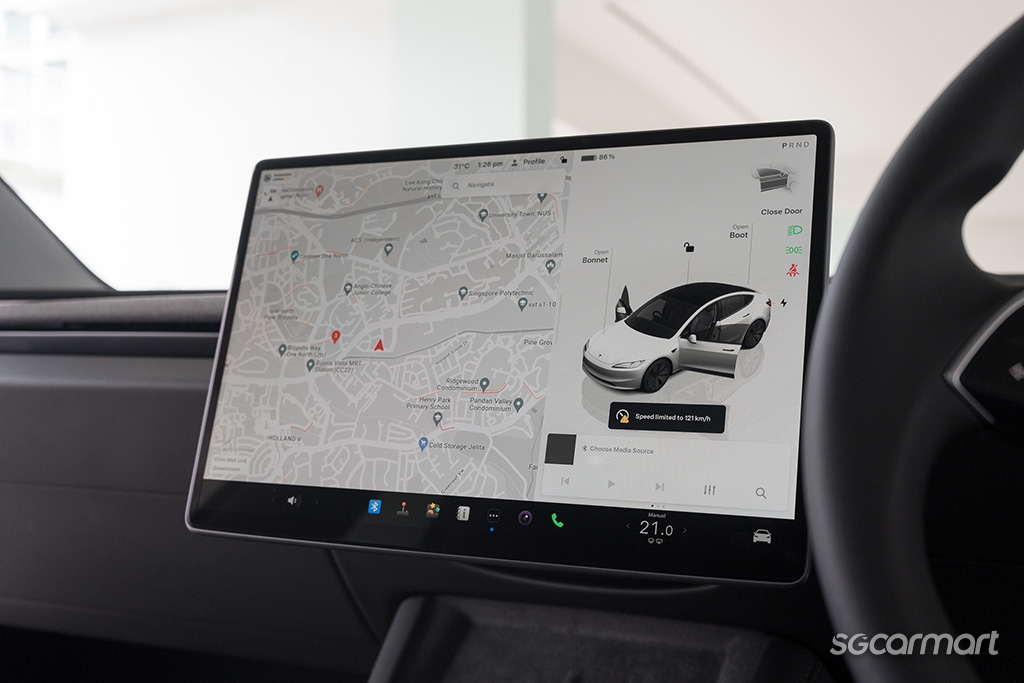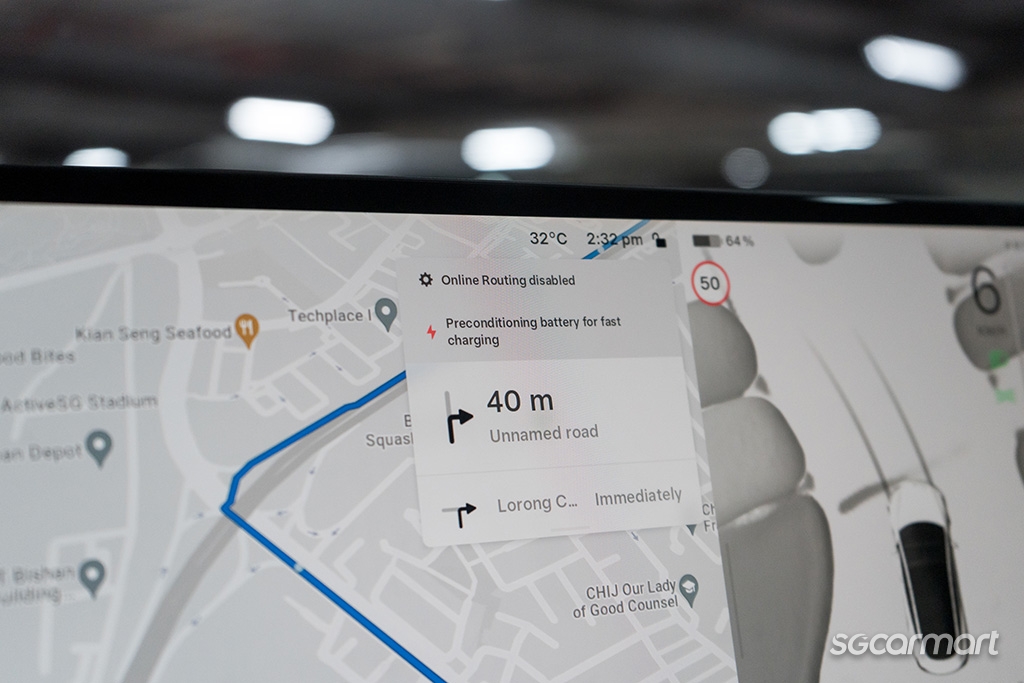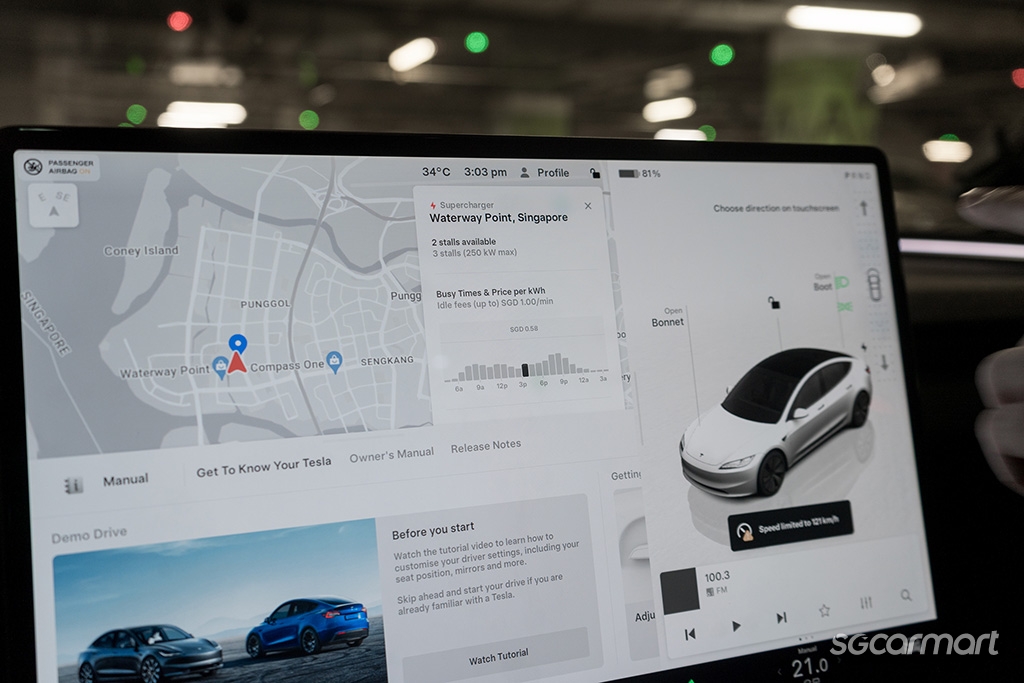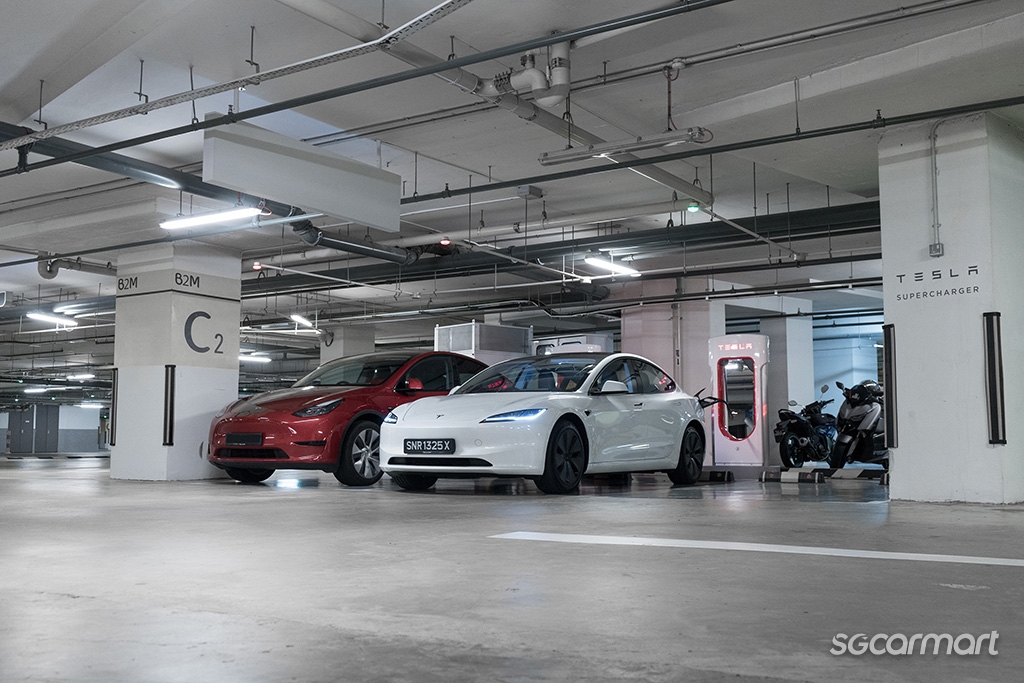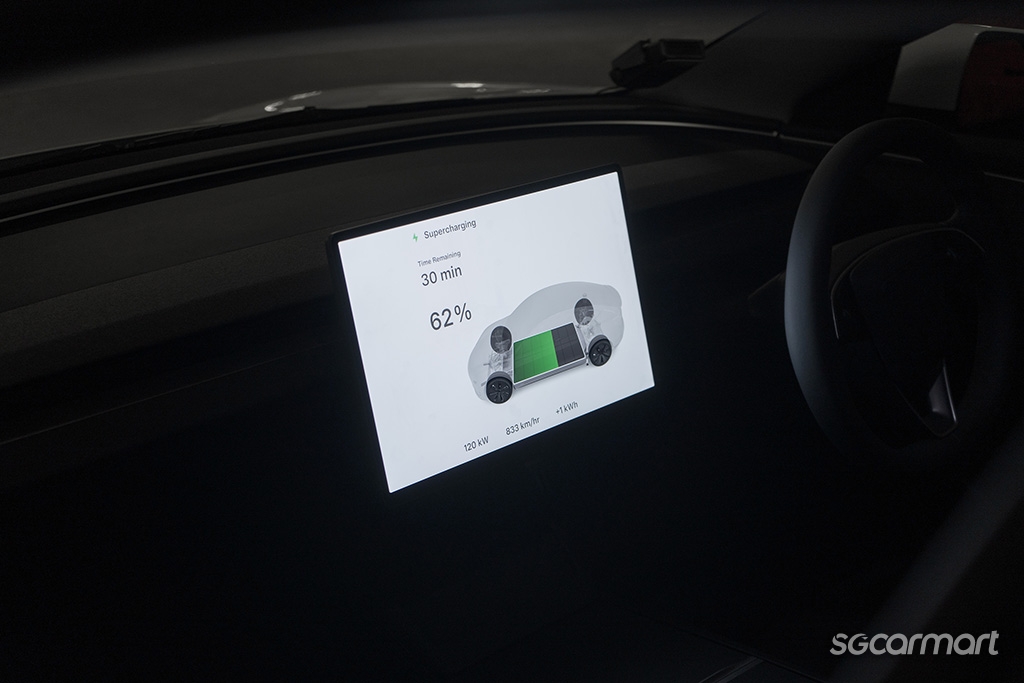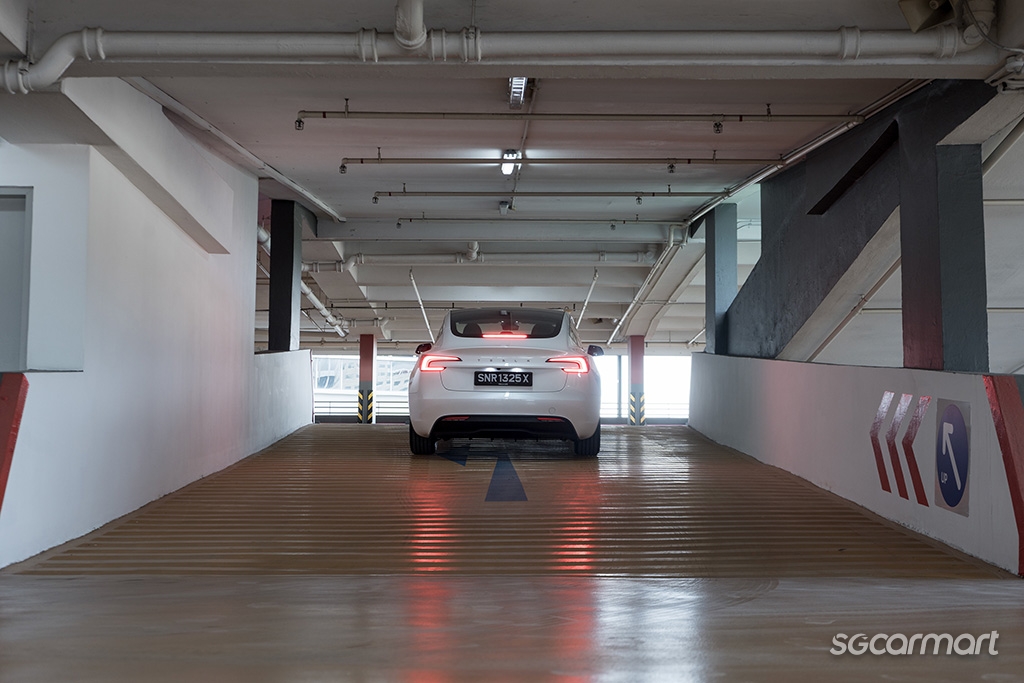Tesla Model 3 RWD 110 60kWh Facelift Review
17 Jul 2024|15,348 views
Facelift (What's New)
Single motor sends 110kW (148bhp) and 350Nm to rear wheels in this variant
Revised suspension setup
Refreshed styling, with improved aerodynamic efficiency from re-sculpted front end
New ambient lighting system and 8.0-inch rear touchscreen
Of all the terms one might associate with the Tesla brand - cutting-edge, alternative or buzzy, and maybe even ballistic (in acceleration) - 'accessible' is unlikely to be the first to come to mind. Teslas are for the first-movers. The early adopters. The ones who want a motoring experience that is not just emissions-free, but also wholly reimagined altogether.
Yet accessibility is exactly what Tesla seems to be gunning for with the latest variant of its refreshed bestseller, the Model 3.
After all, for those indifferent to the firepower of two electric motors, dropping things down to a single one isn't always enticing enough against Singapore's taxes. What one really needs instead is a specific power cap... with a specific three-digit figure.
Rightsizing for the immediate environment: Just the right amount of power
The enthusiasm with which carmakers have (more recently) executed performance cuts on their EVs to bring them into the Category A Club is no longer new news.
But Tesla's move is particularly precise. As its name suggests, the Model 3 110 has been stuck right at the power ceiling, with its single motor now sending a maximum of 110kW (or 148bhp) to the rear wheels. While we've certainly seen power cuts made before for the great B-to-A crossing, none have arguably been performed with as sharp a knife. In fact, the only other EV with its head brushing the Cat A roof currently is the ageing Nissan Leaf.
Against the other more powerful single motor rear-wheel drive variant on the market, the power drop of 131bhp is not to be understated. Still, once you're behind the wheel, it won't be long before you find yourself pondering the same question: How much more power do I actually need in Singapore?
With the car's instant torque unchanged at a good 350Nm, the overarching first note (and observation) is that the Model 3 110 is rather happy to charge off the lights still. This, after all, is a car that can complete the century sprint in a not-shabby 8.6 seconds. Getting up to expressway speed limits is consequently no issue, much less plugging gaps in traffic on smaller roads.
What's more, having its electric motor slightly neutered hasn't altered the Model 3's original driving character. This remains one of the nicest EVs to be at the helm of, especially with the revised suspension setup from the recent facelift.
The Model 3 110's firm-ish ride might be the first hint of its sporty-leaning ambitions, but spend a bit more time with it, and one will also be delighted by the surprising levels of feedback offered by its steering, which is responsive, quick and well-weighted without feeling overly artificial.
Around bends, the car also feels nicely planted, with its underfloor batteries offering a palpably low centre of gravity, and its unchanged 18-inch tyres providing good amounts of grip. Coupled with the bursts of acceleration (at lower speeds, that is), keener drivers will still find themselves having quite a ball behind the wheel. 'De-tuned' as the variant may be, it still feels agile and light-footed on the move.
That's not to say that the Model 3 110 cares only about the one behind the wheel. Despite its firmer suspension, the car's ride is by no means jarring or uncomfortable; in fact, it deals with undulations quite well, shrugging them off quite quickly.
By far the most outstanding quality, however, is how well-insulated the cabin is.
Bowing to the laws of physics certainly already helps greatly, since the Model 3, in refreshed form, is even more slippery than before.
But aiding things further is the fact that its glass roof and windows are now double-glazed (this has the secondary benefit of repelling ambient heat). The sensation of speed is thus doubly-masked: By how composed and stable the car feels, and by how silently you're cutting through the air.
If there's one thing to fault, however, it's that the Model 3 110 isn't too eager to offer choice.
With the power diet inevitably bringing some changes, your range of play is narrowed. Other more powerful variants offer different drive modes, but you'll have to take it that the Model 3 110 is permanently in 'Chill' mode.
Another thing to note is that power certainly plateaus more quickly, if you're trying to, say, prod the car quickly from 75km/h to 90km/h. Again, it's not that the car is slow; one simply gets the sense that it has less to give in its reserves.
By a slightly different token of restrictiveness, you're also forced into one-pedal driving, and with one sole, preset level of regenerative braking strength.
As the story goes, this maximises the car's drive range - and to Tesla's credit, it really didn't take us more than a couple of days to learn how to modulate the accelerator pedal. (Crucially, real-world range on a full charge is also commendable; it would have been within the 450-ish km region given our driving patterns.)
Still, there are certain scenarios in which you could see a 'Creep' mode coming in handy: When parking (especially in parallel lots), for instance, or when stuck in a heavy traffic jam.
More polished on the outside and inside
Otherwise, there's really no telling the Model 3 110 apart from the 'superior' variants.
Post-refresh, the car has shedded the ungainly curves of its predecessor's face for a sharper-looking front end. Gone is the wide-eyed 'frog-likeness', and in its place instead sit narrowed head lights, and a flattened out and more angular nose. The new bracket-shaped taillights mark a nice evolution too.
With the power cut inviting a closer look at the Model 3, drivers will also find a car that offers good levels of practicality and equipment in equal measure.
The recessed area beneath the centre console provides the middle passenger with more legroom than one normally gets, while the car's panoramic glass roof ensures that the cabin always feels airy and spacious
To be clear, rear headroom is just about acceptable for the average Singaporean adult with the Model 3's sloping roofline. If your teenage growth spurt shot you well past 1.75m, you might find yourself struggling to sit upright.
Nonetheless, in allowing so much light in, the massive glass roof defends occupants valiantly against any sensations of claustrophobia. Moreover, even though the underfloor batteries mean that you do sit with your knees slightly raised, the car's generous wheelbase and flat floor provide passengers with excellent legroom. In fact, the rear bench rewards the middle passenger in one specific way: The way the centre console's base tapers inwards creates a nice little cavern to tuck one's legs into.
Rounding things off on the practicality front, the Model 3 offers a good amount of carrying capacity ability as well - rear and front. A frunk is always a nifty and welcome addition that makes retrieving soft bags and smaller items fuss-free when you find yourself in older carparks with slanting roof lines at the rear.
The Model 3's decently-sized frunk offers a good alternative for the storage of smaller items - especially in older carparks
The Model 3 110 might be the base variant, but it still gets the holy grail of in-car creature comforts: Ventilated front seats, which are an uncontestable godsend for any Singaporean. Post-facelift, ambient lighting and new materials in the cabin help the space feel more upmarket than before too.
It should also come as no surprise that the car is fully loaded with safety assistance systems as standard. Beyond blind spot monitors, and front collision warnings, AutoPilot (Beta) doesn't just activate lane centering and adaptive cruise control, but can even help you make lane changes automatically after you've indicated left or right.
You're also pounded with the same, almost annihilative intensity of Tesla's tech-flex. The lack of a Start/Stop button - with a weight-sensing seat doing the work - isn't uncommon now, but here, there isn't even a signal stalk (these are buttons instead on the new steering wheel), nor a proper gear tab or shifter. Instead, swiping upwards or downwards on the top right of the massive 15.4-inch infotainment touchscreen puts the car into Drive or Reverse.
There are even fewer physical controls in the facelifted Model 3 - your indicator stalk has been replaced by buttons on the steering wheel, while shifting gears is done via the upper right hand corner of the touchscreen, or via a touch panel on the roof
And speaking of that infotainment touchscreen, there's actually quite a lot to like about the operating experience - including the sheer amount of digital real estate, crisp graphics, extreme responsiveness, and well-labelled sub-menus. Expansive it may be; confounding or counterintuitive it is (largely) not.
But because Tesla is so convicted that its tech-vision provides the most optimal experience for drivers, pain points are inevitable.
The same caveats: Ruthless minimalism?
In the cabin's ruthless pursuit of button-free minimalism, even basic functions such as opening the glovebox, and popping the frunk, are operated via the screen. Potentially more frustrating for traditional drivers, however, is the fact that Apple CarPlay and Android Auto are not supported.
The idea of locking a user into a single digital ecosystem, to be fair, is arguably not unheard of for a major tech firm (which Tesla is). To Tesla's credit, too, its operating system nails two essentials down well; music streaming apps can be downloaded directly into the OS, while its native navigation system is arguably the best (and nicest looking) on the market. With phone pairing via Bluetooth for calls still supported, the provision of those two features arguably dampens the need for smartphone mirroring down a fair bit. Again, however, it's the principle of offering consumers choice.
The seamlessness of Tesla's own Supercharger network is hard to fault; navigating to it pre-conditions the car's battery for fast charging, while usage trends of each location help drivers to plan out their visits more intentionally
To return to the note of navigation, however, Tesla's Superchargers - and their close integration with the car's maps - continue to form another highlight of the ownership experience today.
The early efforts invested by the firm into broadening the network are easy to appreciate. It's effectively a plug-and-play system - no fiddling with third party apps required, assuming you've already set up your user profile on the car and your Tesla app. You can even direct yourself to a Supercharger in Malaysia, the furthest of which will likely (quite humorously) indicate that you'll reach with a negative battery percentage.
What's more, navigating to one of these said Superchargers automatically pre-conditions the battery so that it's at an optimal temperature for fast charging the moment you pull in. Speaking of which, the Model 3 110's battery, like its more powerful single-motor twin, can take fast charging at up to 170kW, with which its state of charge can go from 10 to 80% in a zippy 25 minutes.
The accessibility question: Widened net, same avant-garde ethos?
Singapore's roads punish speed, while its tax structures reward the lack of power. Considering that the rules have been laid out as such, the Model 3 110 RWD plays to both aspects perfectly.
What the car gives up in performance, it gives back with a light, extra dose of upfront affordability, and lower road tax bills over the longer run.
At the same time, it doesn't lose the ethos of Tesla. Even as the competition grows stiffer, the Model 3's fusion of hardware and software still fascinates deeply, marks itself out clearly from that of its competitors, and is perhaps almost stubborn to a fault in wanting to stay ahead of the curve. Yet the car is also hard not to like because it remains one of the nicest EVs to drive on the market.
A less powerful electric motor hasn't changed all of that. Rather, what its magical '110' label is potentially doing now is to motivate previously apathetic parties to sit up and think, "Wait, maybe this is worth a look."
If those people do take a look, what they'll find is a polished and modern machine that - although sometimes frustrating in its dogged insistence on rewriting the playbook - is ultimately still a practical, technologically sophisticated, and rather excellent electric car.
Be sure to check out our review of the facelifted Tesla Model 3 Long Range AWD here!
Meanwhile, here are a couple of other electric sedans on the market to check out:
Facelift (What's New)
Single motor sends 110kW (148bhp) and 350Nm to rear wheels in this variant
Revised suspension setup
Refreshed styling, with improved aerodynamic efficiency from re-sculpted front end
New ambient lighting system and 8.0-inch rear touchscreen
Of all the terms one might associate with the Tesla brand - cutting-edge, alternative or buzzy, and maybe even ballistic (in acceleration) - 'accessible' is unlikely to be the first to come to mind. Teslas are for the first-movers. The early adopters. The ones who want a motoring experience that is not just emissions-free, but also wholly reimagined altogether.
Yet accessibility is exactly what Tesla seems to be gunning for with the latest variant of its refreshed bestseller, the Model 3.
After all, for those indifferent to the firepower of two electric motors, dropping things down to a single one isn't always enticing enough against Singapore's taxes. What one really needs instead is a specific power cap... with a specific three-digit figure.
Rightsizing for the immediate environment: Just the right amount of power
The enthusiasm with which carmakers have (more recently) executed performance cuts on their EVs to bring them into the Category A Club is no longer new news.
But Tesla's move is particularly precise. As its name suggests, the Model 3 110 has been stuck right at the power ceiling, with its single motor now sending a maximum of 110kW (or 148bhp) to the rear wheels. While we've certainly seen power cuts made before for the great B-to-A crossing, none have arguably been performed with as sharp a knife. In fact, the only other EV with its head brushing the Cat A roof currently is the ageing Nissan Leaf.
Against the other more powerful single motor rear-wheel drive variant on the market, the power drop of 131bhp is not to be understated. Still, once you're behind the wheel, it won't be long before you find yourself pondering the same question: How much more power do I actually need in Singapore?
With the car's instant torque unchanged at a good 350Nm, the overarching first note (and observation) is that the Model 3 110 is rather happy to charge off the lights still. This, after all, is a car that can complete the century sprint in a not-shabby 8.6 seconds. Getting up to expressway speed limits is consequently no issue, much less plugging gaps in traffic on smaller roads.
What's more, having its electric motor slightly neutered hasn't altered the Model 3's original driving character. This remains one of the nicest EVs to be at the helm of, especially with the revised suspension setup from the recent facelift.
The Model 3 110's firm-ish ride might be the first hint of its sporty-leaning ambitions, but spend a bit more time with it, and one will also be delighted by the surprising levels of feedback offered by its steering, which is responsive, quick and well-weighted without feeling overly artificial.
Around bends, the car also feels nicely planted, with its underfloor batteries offering a palpably low centre of gravity, and its unchanged 18-inch tyres providing good amounts of grip. Coupled with the bursts of acceleration (at lower speeds, that is), keener drivers will still find themselves having quite a ball behind the wheel. 'De-tuned' as the variant may be, it still feels agile and light-footed on the move.
That's not to say that the Model 3 110 cares only about the one behind the wheel. Despite its firmer suspension, the car's ride is by no means jarring or uncomfortable; in fact, it deals with undulations quite well, shrugging them off quite quickly.
By far the most outstanding quality, however, is how well-insulated the cabin is.
Bowing to the laws of physics certainly already helps greatly, since the Model 3, in refreshed form, is even more slippery than before.
But aiding things further is the fact that its glass roof and windows are now double-glazed (this has the secondary benefit of repelling ambient heat). The sensation of speed is thus doubly-masked: By how composed and stable the car feels, and by how silently you're cutting through the air.
If there's one thing to fault, however, it's that the Model 3 110 isn't too eager to offer choice.
With the power diet inevitably bringing some changes, your range of play is narrowed. Other more powerful variants offer different drive modes, but you'll have to take it that the Model 3 110 is permanently in 'Chill' mode.
Another thing to note is that power certainly plateaus more quickly, if you're trying to, say, prod the car quickly from 75km/h to 90km/h. Again, it's not that the car is slow; one simply gets the sense that it has less to give in its reserves.
By a slightly different token of restrictiveness, you're also forced into one-pedal driving, and with one sole, preset level of regenerative braking strength.
As the story goes, this maximises the car's drive range - and to Tesla's credit, it really didn't take us more than a couple of days to learn how to modulate the accelerator pedal. (Crucially, real-world range on a full charge is also commendable; it would have been within the 450-ish km region given our driving patterns.)
Still, there are certain scenarios in which you could see a 'Creep' mode coming in handy: When parking (especially in parallel lots), for instance, or when stuck in a heavy traffic jam.
More polished on the outside and inside
Otherwise, there's really no telling the Model 3 110 apart from the 'superior' variants.
Post-refresh, the car has shedded the ungainly curves of its predecessor's face for a sharper-looking front end. Gone is the wide-eyed 'frog-likeness', and in its place instead sit narrowed head lights, and a flattened out and more angular nose. The new bracket-shaped taillights mark a nice evolution too.
With the power cut inviting a closer look at the Model 3, drivers will also find a car that offers good levels of practicality and equipment in equal measure.
The recessed area beneath the centre console provides the middle passenger with more legroom than one normally gets, while the car's panoramic glass roof ensures that the cabin always feels airy and spacious
To be clear, rear headroom is just about acceptable for the average Singaporean adult with the Model 3's sloping roofline. If your teenage growth spurt shot you well past 1.75m, you might find yourself struggling to sit upright.
Nonetheless, in allowing so much light in, the massive glass roof defends occupants valiantly against any sensations of claustrophobia. Moreover, even though the underfloor batteries mean that you do sit with your knees slightly raised, the car's generous wheelbase and flat floor provide passengers with excellent legroom. In fact, the rear bench rewards the middle passenger in one specific way: The way the centre console's base tapers inwards creates a nice little cavern to tuck one's legs into.
Rounding things off on the practicality front, the Model 3 offers a good amount of carrying capacity ability as well - rear and front. A frunk is always a nifty and welcome addition that makes retrieving soft bags and smaller items fuss-free when you find yourself in older carparks with slanting roof lines at the rear.
The Model 3's decently-sized frunk offers a good alternative for the storage of smaller items - especially in older carparks
The Model 3 110 might be the base variant, but it still gets the holy grail of in-car creature comforts: Ventilated front seats, which are an uncontestable godsend for any Singaporean. Post-facelift, ambient lighting and new materials in the cabin help the space feel more upmarket than before too.
It should also come as no surprise that the car is fully loaded with safety assistance systems as standard. Beyond blind spot monitors, and front collision warnings, AutoPilot (Beta) doesn't just activate lane centering and adaptive cruise control, but can even help you make lane changes automatically after you've indicated left or right.
You're also pounded with the same, almost annihilative intensity of Tesla's tech-flex. The lack of a Start/Stop button - with a weight-sensing seat doing the work - isn't uncommon now, but here, there isn't even a signal stalk (these are buttons instead on the new steering wheel), nor a proper gear tab or shifter. Instead, swiping upwards or downwards on the top right of the massive 15.4-inch infotainment touchscreen puts the car into Drive or Reverse.
There are even fewer physical controls in the facelifted Model 3 - your indicator stalk has been replaced by buttons on the steering wheel, while shifting gears is done via the upper right hand corner of the touchscreen, or via a touch panel on the roof
And speaking of that infotainment touchscreen, there's actually quite a lot to like about the operating experience - including the sheer amount of digital real estate, crisp graphics, extreme responsiveness, and well-labelled sub-menus. Expansive it may be; confounding or counterintuitive it is (largely) not.
But because Tesla is so convicted that its tech-vision provides the most optimal experience for drivers, pain points are inevitable.
The same caveats: Ruthless minimalism?
In the cabin's ruthless pursuit of button-free minimalism, even basic functions such as opening the glovebox, and popping the frunk, are operated via the screen. Potentially more frustrating for traditional drivers, however, is the fact that Apple CarPlay and Android Auto are not supported.
The idea of locking a user into a single digital ecosystem, to be fair, is arguably not unheard of for a major tech firm (which Tesla is). To Tesla's credit, too, its operating system nails two essentials down well; music streaming apps can be downloaded directly into the OS, while its native navigation system is arguably the best (and nicest looking) on the market. With phone pairing via Bluetooth for calls still supported, the provision of those two features arguably dampens the need for smartphone mirroring down a fair bit. Again, however, it's the principle of offering consumers choice.
The seamlessness of Tesla's own Supercharger network is hard to fault; navigating to it pre-conditions the car's battery for fast charging, while usage trends of each location help drivers to plan out their visits more intentionally
To return to the note of navigation, however, Tesla's Superchargers - and their close integration with the car's maps - continue to form another highlight of the ownership experience today.
The early efforts invested by the firm into broadening the network are easy to appreciate. It's effectively a plug-and-play system - no fiddling with third party apps required, assuming you've already set up your user profile on the car and your Tesla app. You can even direct yourself to a Supercharger in Malaysia, the furthest of which will likely (quite humorously) indicate that you'll reach with a negative battery percentage.
What's more, navigating to one of these said Superchargers automatically pre-conditions the battery so that it's at an optimal temperature for fast charging the moment you pull in. Speaking of which, the Model 3 110's battery, like its more powerful single-motor twin, can take fast charging at up to 170kW, with which its state of charge can go from 10 to 80% in a zippy 25 minutes.
The accessibility question: Widened net, same avant-garde ethos?
Singapore's roads punish speed, while its tax structures reward the lack of power. Considering that the rules have been laid out as such, the Model 3 110 RWD plays to both aspects perfectly.
What the car gives up in performance, it gives back with a light, extra dose of upfront affordability, and lower road tax bills over the longer run.
At the same time, it doesn't lose the ethos of Tesla. Even as the competition grows stiffer, the Model 3's fusion of hardware and software still fascinates deeply, marks itself out clearly from that of its competitors, and is perhaps almost stubborn to a fault in wanting to stay ahead of the curve. Yet the car is also hard not to like because it remains one of the nicest EVs to drive on the market.
A less powerful electric motor hasn't changed all of that. Rather, what its magical '110' label is potentially doing now is to motivate previously apathetic parties to sit up and think, "Wait, maybe this is worth a look."
If those people do take a look, what they'll find is a polished and modern machine that - although sometimes frustrating in its dogged insistence on rewriting the playbook - is ultimately still a practical, technologically sophisticated, and rather excellent electric car.
Be sure to check out our review of the facelifted Tesla Model 3 Long Range AWD here!
Meanwhile, here are a couple of other electric sedans on the market to check out:
Also read our comparison article on:
Polestar 2 vs Tesla Model 3Car Information
Tesla Model 3 Electric RWD 110 60 kWh (A)
$94,982 (w/o COE)
CAT A|Electric|7.6km/kWh
Horsepower
110kW (148 bhp)
Torque
350 Nm
Acceleration
8.6sec (0-100km /hr)
Thank You For Your Subscription.
- The Drive
- Exterior And Interior
- The Caveats
- Conclusion



































































